Ever looked at a dog and thought, “Did they just roll their eyes at me?”
Some dogs have faces so expressive, it’s hard not to believe they understand everything. Whether it’s a furrowed brow, a toothy grin, or a judging side-eye, these dogs don’t need words to make their point.
Their faces do all the talking. But what makes certain breeds more expressive than others? Is it the shape of their eyes, their brows, or just their dramatic flair?
In this article, we’ll explore dog breeds known for their standout facial expressions. From heart-melting gazes to sass-filled stares, these dogs turn everyday emotions into theatrical performances.
Dog Breeds With Expressive Faces
1. Boxer

Boxers have prominent, furrowed brows that shift with every emotional cue, making their facial expressions easy to read. From a tilted head paired with raised eyebrows to a narrowed gaze of curiosity, their face speaks before they act. These micro-movements create a unique emotional transparency.
Emotional Sync With Owners
They mirror moods exceptionally well, often reacting to human tones with quick shifts in posture or eye contact. Whether it’s a low tail wag or a sudden forward lean, their body language syncs with the atmosphere around them. This makes communication feel intuitive, not trained.
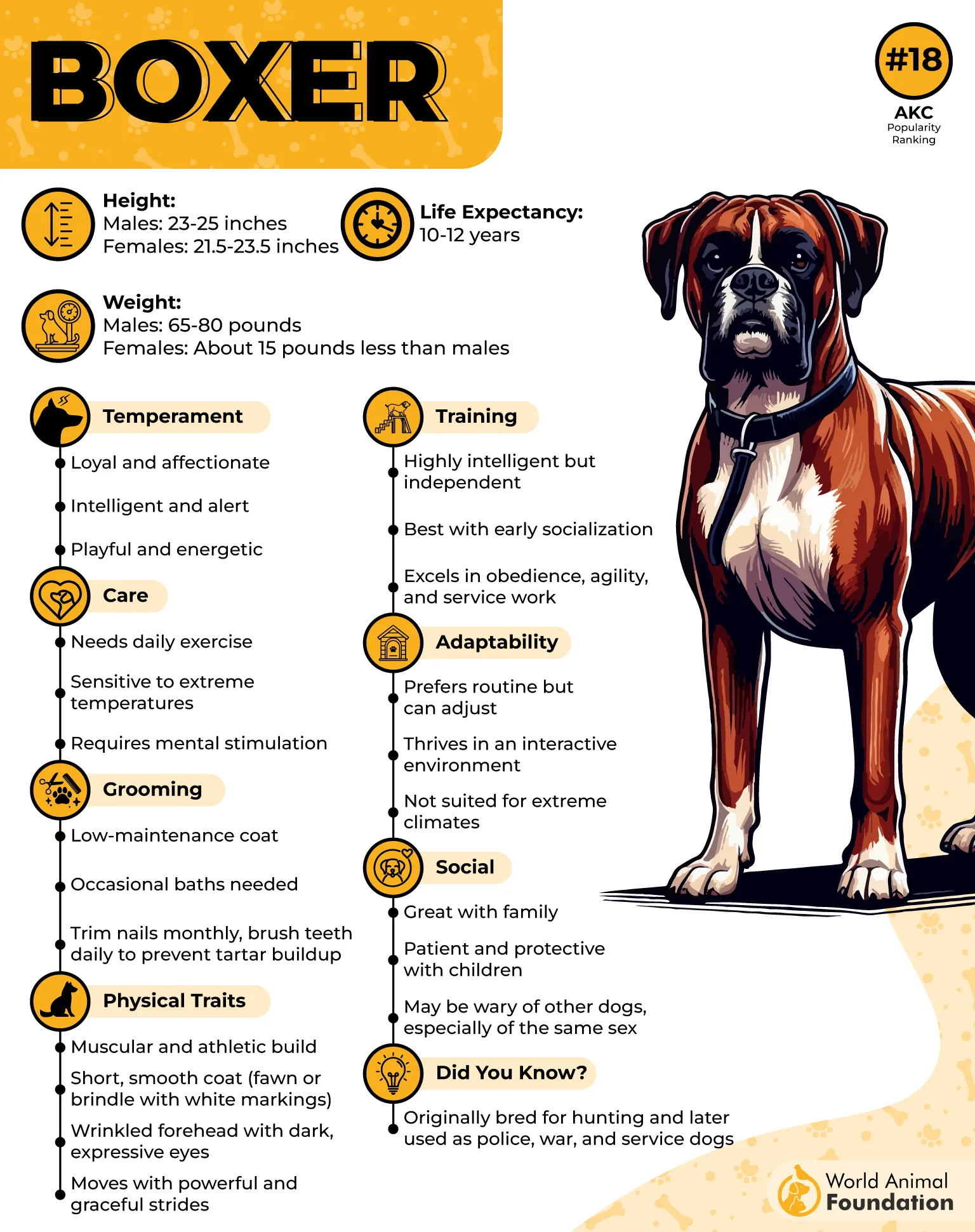
Mischievous Look, Genuine Emotion
The Boxer’s signature “smirk” often reflects anticipation or playful intent. That slightly upturned mouth can switch to wide-eyed concern in unfamiliar settings. These changes are subtle, but consistent enough to be unmistakable to those who know the breed.
Naturally In-Tune Companions
According to the Showsight Magazine, their affectionate nature plays a role in how expressive they are—they want to be understood. The more time they spend with someone, the more finely tuned their reactions become.
2. French Bulldog
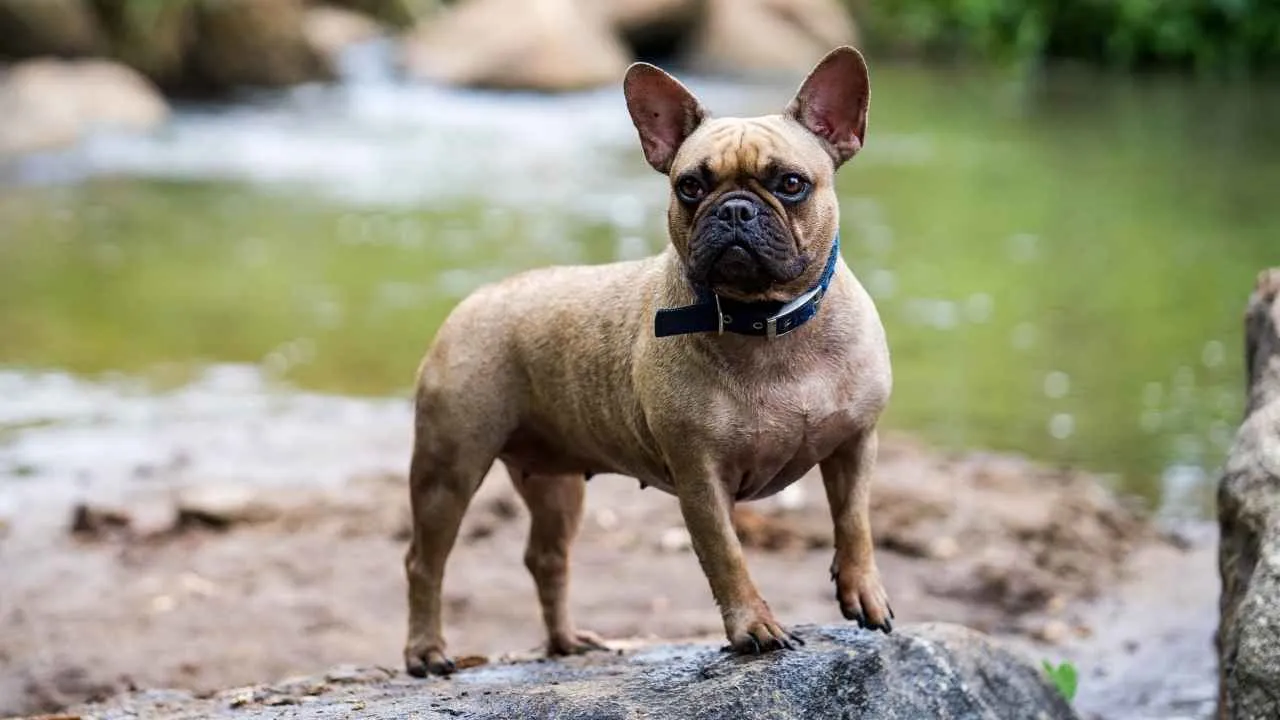
French Bulldogs often appear deep in thought due to their pronounced brows and tight facial muscles. This “serious” look is mostly structural but becomes expressive in moments of confusion or curiosity. Their soulful eyes give away emotions long before any vocal cue.
Micro-Expressions That Register
Even slight shifts in their mouth or ear position can signal boredom, anticipation, or alertness. These details often go unnoticed in other breeds but are central to the expressive nature of the Frenchie. Owners often pick up these shifts like a silent conversation.
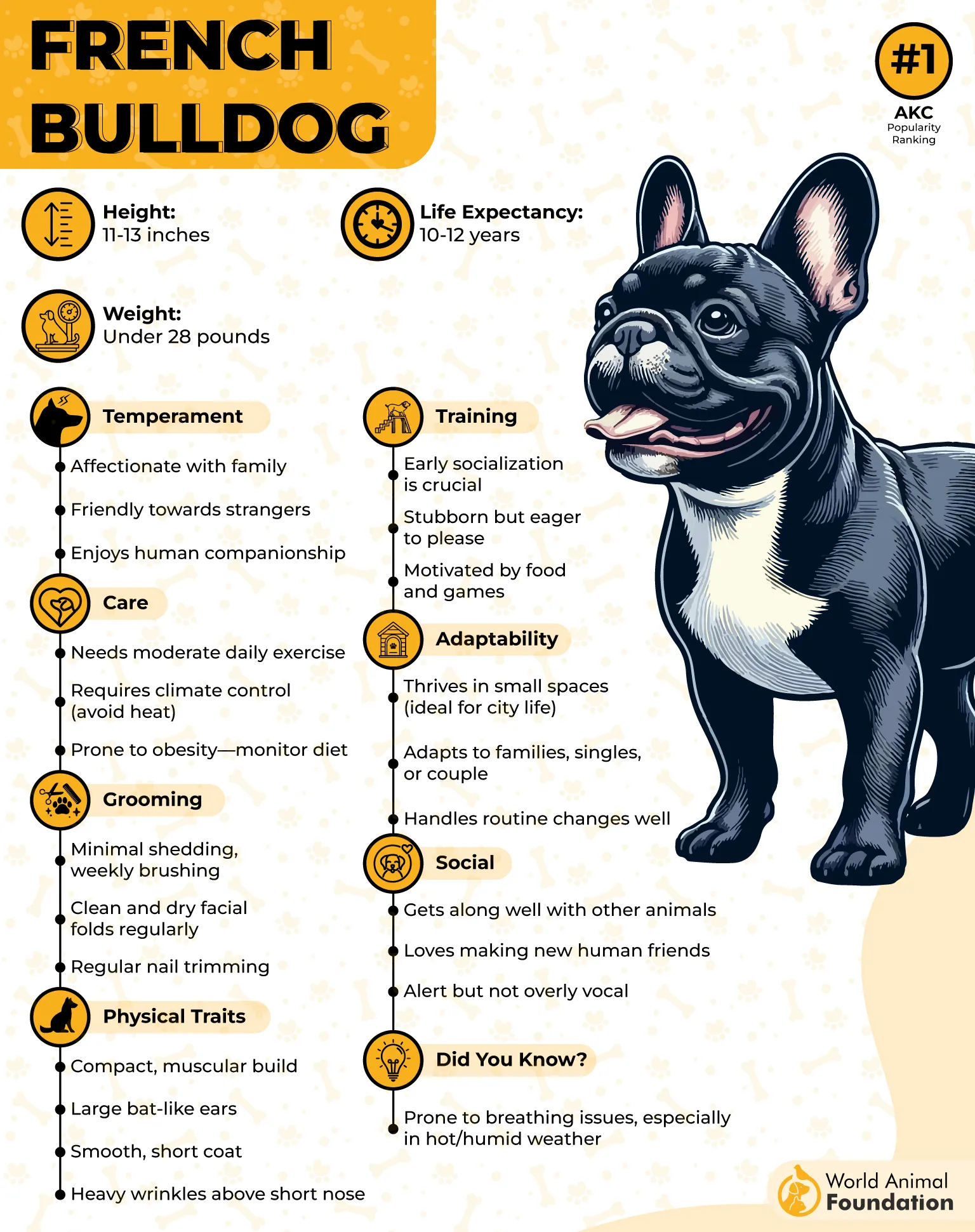
Static Face, Dynamic Mood
They don’t rely on exaggerated movement—emotions are often shown through pacing, yawning, or intense staring. This breed holds eye contact longer than most small dogs, especially during interactions involving food or commands. It’s a form of communication refined through observation.
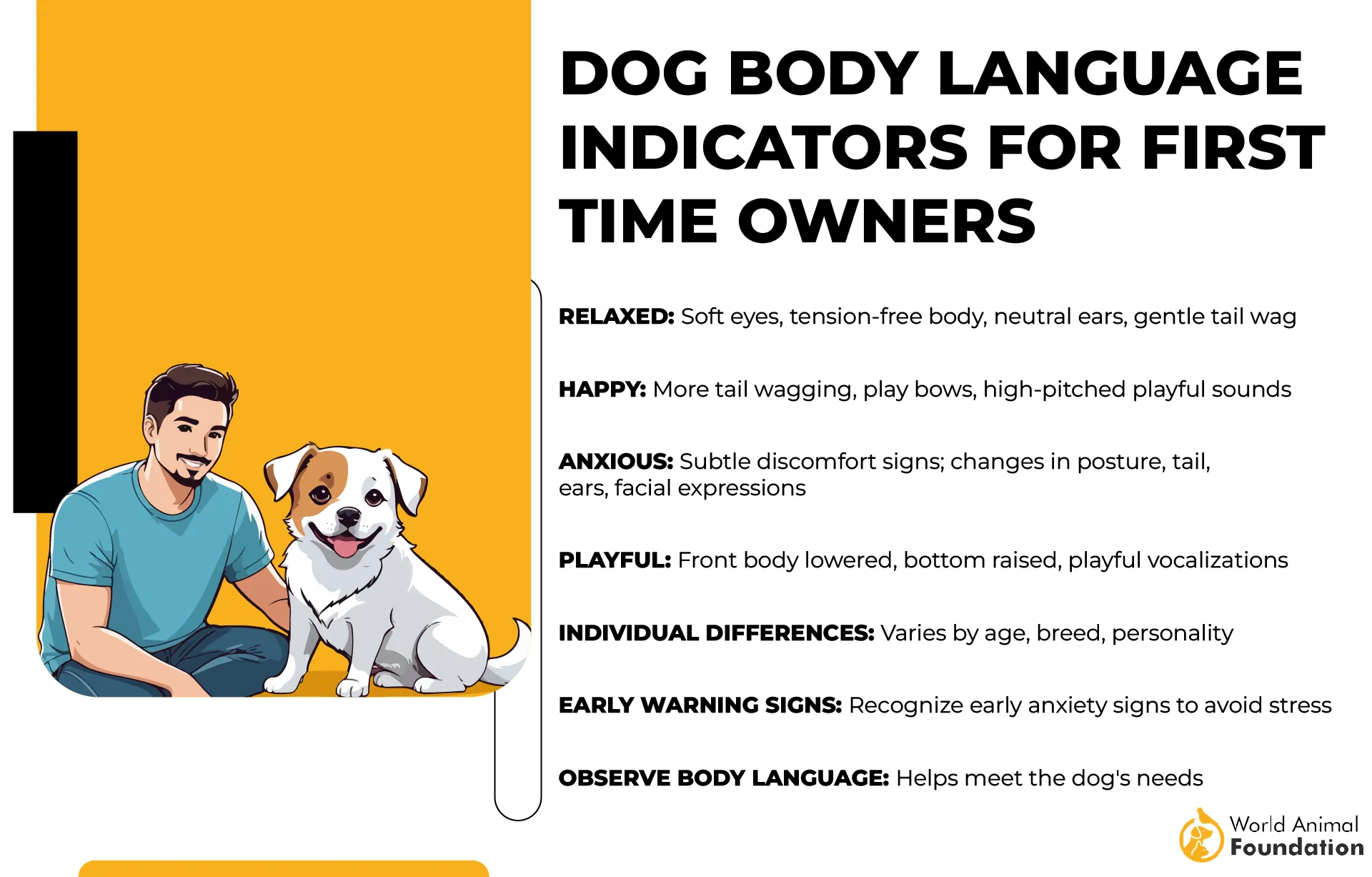
A History Behind the Face
French Bulldogs were bred as companion animals during the Industrial Revolution, favored by lace workers in Nottingham, as per Vetscription. Their compact form and playful nature made them both manageable and emotionally responsive—a combination that still defines them today.
3. Cavalier King Charles Spaniel

Cavaliers are known for their large, round, and expressive eyes that seem to reflect emotions instantly, be it confusion, joy, or concern. A slight droop at the corner when they’re anxious, or a widened sparkle when excited, makes their gaze almost narrative. This eye contact often creates instant emotional recognition between dog and owner.
Eyebrows That Shift With Mood
Though not prominent in fur texture, the breed’s subtle brow ridge moves visibly with changing emotions. You’ll see a gentle raise when they’re seeking attention or a soft furrow when observing a new environment. These micro-expressions are especially noticeable during quiet interactions or sudden environmental changes.

Breed-Specific Sensitivity
Their close history as lap companions to royalty directly shaped their temperament—they respond to tone and tension in a room with physical stillness or alertness. This sensitivity helps them register emotions quickly and adapt their behavior. As one of the most emotionally expressive breeds, their reactions are often immediate and transparent.
Facial Softness With Emotional Range
Cavalier’s small mouth shape enhances subtle changes, especially when paired with vocal cues. The face rarely stays still when engaged, making expression part of their interaction style.
4. Pug
The wrinkles on a Pug’s forehead shift noticeably with different emotional states. A focused gaze or puzzled sound causes the lines between the eyes to gather tightly. These expressions are subtle but easy to read once you’re familiar with the breed.
Large Eyes With Immediate Feedback
Pugs have bulbous eyes that visibly react to changes in mood or environment. They widen when startled or excited and narrow slightly when uncertain. That responsiveness gives them an expressive look that feels surprisingly relatable.
Nonverbal Reaction to Voice
Their head tilt, especially when paired with steady eye contact, often reflects sound recognition. Researchers suggest this movement may enhance how they read tone and intention. It’s part of their sensitivity to emotional shifts in human interaction.
Expression Tied to Noble History
Pugs were once favored by the House of Orange in the Netherlands during the 16th century, as Britannica claims. Historic accounts mention their alert nature and connection with their human handlers. Their expressive behavior was likely one reason they were kept so close to royalty.
5. Shih Tzu
Shih Tzus are known for their large, dark, rounded eyes—traits originally favored by Chinese royalty for their soulful look. These eyes often carry a visible range of emotions, from curiosity and surprise to quiet contentment. A slow blink or downward glance can even signal subtle moods like discomfort or fatigue.
Brows and Blinks That Communicate
Their high-set brows shift noticeably during interactions, giving clues that are easy to miss in other breeds. This subtle expressiveness, combined with strategic blinking, enhances their ability to reflect human emotions back to their owners. It’s a small-dog sensitivity that’s hard to replicate.
Naturally Soft-Faced Interactions
The Shih Tzu’s facial muscles rest in a relaxed state, creating consistently gentle expressions. Whether alert or calm, their face stays soft and neutral—ideal for environments where loud cues would startle easily. Their expression changes are often minimal, but deeply felt by attentive owners.
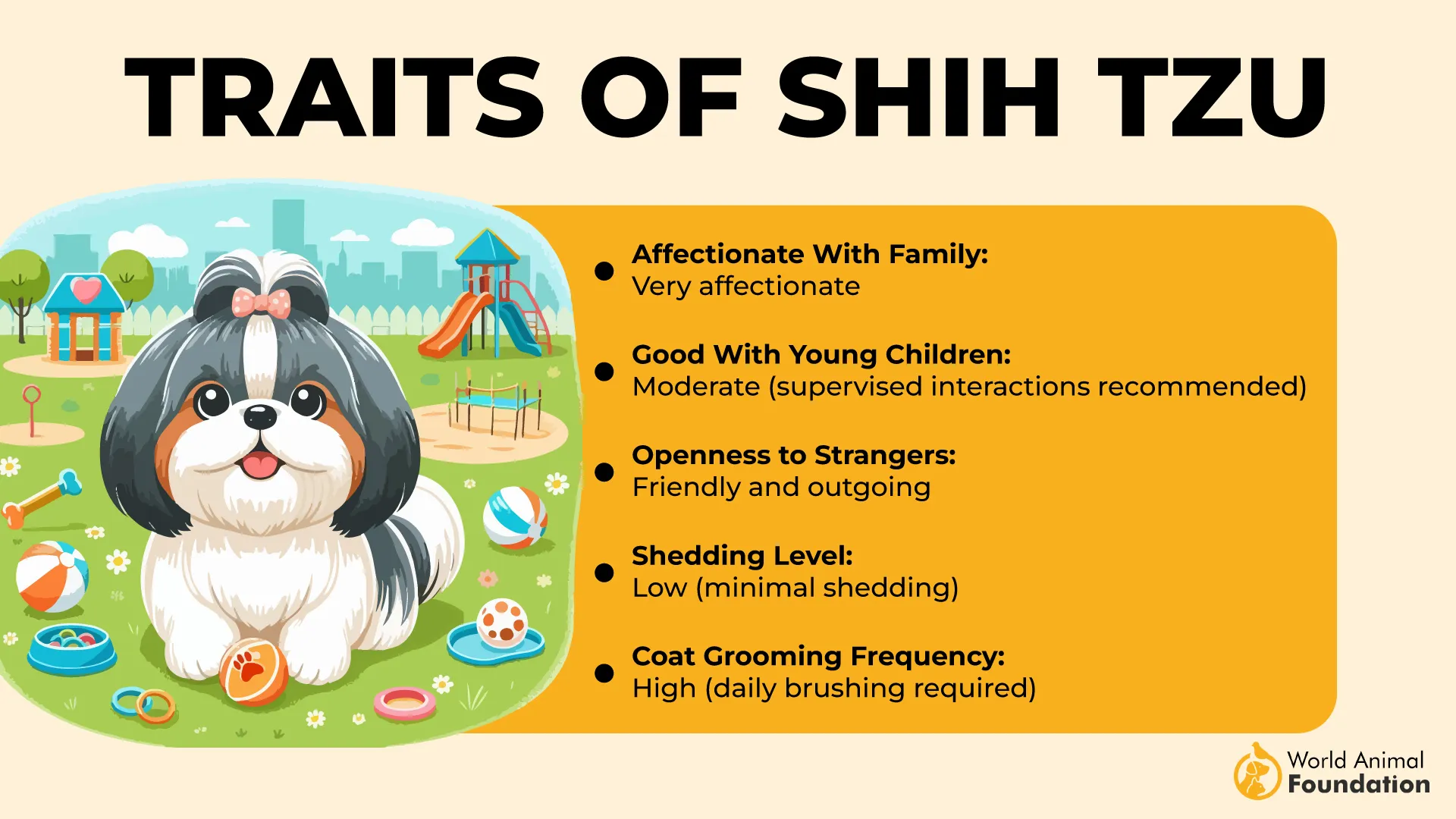
A Breed Bred to Be Watched
Historically bred to sit near emperors and watch people closely, Shih Tzus developed an unusually attentive gaze. This habit remains today—they maintain long eye contact with people they trust. It’s not dominance; it’s observation that borders on emotional presence.
6. Boston Terrier
Boston Terriers have naturally round, slightly protruding eyes that amplify emotional cues. Subtle shifts in eye direction or dilation often reveal excitement, confusion, or anticipation before any sound is made. This visual clarity makes their reactions instantly readable—even to unfamiliar observers.
Signature Muzzle Movements
The breed’s short muzzle isn’t expressionless—it moves in brief twitches, paired with jaw shifts or lip lifts. These micro-gestures often indicate curiosity or alertness, especially when they detect unfamiliar scents. The way the nose wrinkles slightly before a bark is a trait many owners recognize.
Social Behavior Triggers
Boston Terriers frequently raise one paw or tilt their head slightly when engaging with people to hear better. This gesture, paired with quick eye contact and a shifting tail base, shows how they communicate using small but layered cues. Their gentle nature makes these movements easy to misread as shyness, though they’re actually a call for interaction.
Historic Breed with Big Personality
Known as the first American-developed breed officially recognized by the AKC, they were once nicknamed “The American Gentleman” due to their tuxedo-like markings and calm demeanor, as per Citizen Shipper. While compact, they’re alert furry companions, often scanning their environment with high frequency, especially in unfamiliar settings.
7. Golden Retriever
Golden Retrievers hold eye contact in a way that feels intentional, often pausing to read human expressions. Their almond-shaped eyes soften during affection and widen slightly when they’re curious. The emotional transparency in their gaze creates instant rapport with people.
The Rare Grinning Behavior
A small number of Goldens display what’s known as a submissive grin—an upward curl of the lips during greetings. It’s not confusion with a snarl but a friendly, low-tension expression. This grin, while uncommon in other breeds, adds a playful charm unique to them.
Face Muscles That Reflect Mood
Their facial muscles around the muzzle and brows move with surprising precision. You’ll often notice a raised brow, furrowed forehead, or slight nose twitch when they’re trying to understand a command or mood. These shifts often mirror the emotional tone around them.
Deep Sensitivity to Human Energy
Golden Retrievers are highly attuned to emotional shifts in their environment. A lowered voice or slower movement prompts subtle changes in their expression. Their human companions often describe this breed as emotionally synced through both behavior and face.
8. Dachshund
Golden Retrievers often use lingering eye contact to convey feelings with remarkable depth. Their soft gaze easily shifts with tone, brightening with excitement or dimming with concern. It’s a quiet, consistent way they bond through unspoken signals.
Recognizable Lip Movements
Many Goldens display what’s known as the submissive grin—an upward curl of the lips when they’re eager or seeking gentle attention. It’s a breed-specific trait that’s often mistaken for a smile. The look usually appears during greetings or low-stress interaction.
Expressive Brow and Ears
They have distinct brow ridges and flexible ears that move visibly with mood shifts. A slight tilt or raised brow often accompanies changes in voice or environment. These reflexes form the core of their daily expressiveness with people they trust.
Naturally Attuned to People
Golden Retrievers thrive on emotional closeness and mirror the energy of those around them. Their affectionate nature makes them quick to respond with visible emotion, especially in familiar routines. Expression for them is part of interaction, not performance.
9. Samoyed
The Samoyed’s signature “Sammy smile” is a structural trait developed to prevent drool from freezing in Arctic conditions, as highlighted by Britannica. That lifted mouth gives them a perpetual grin, but subtle shifts in their eyes and brow reveal actual mood. Their expressions aren’t static—they flex with intent.
Vocal and Visual Signals
Samoyeds communicate emotions through high-energy eye contact, head tilts, and animated movement. Their reactions are quick and layered—often pairing a yawn with a squint to signal unease or a sharp gaze before letting out a howl. It’s a constant visual dialogue.
Ice-Bred Yet Emotionally Warm
Bred by the Samoyedic people to live closely with families and sled teams, this breed evolved social sensitivity out of necessity. In the canine world, few breeds match their ability to read group energy and shift behavior accordingly. Their expressiveness isn’t learned—it’s part of their working DNA.
Distinct Presence Among Breeds
What makes Samoyeds stand out is how they convey feeling through stillness as much as through motion. These breeds stand apart with a gaze that can soften tension or spark play. They respond to other dogs with clarity, not confusion, often steering interaction through nuanced cues.
Conclusion
As you’ve seen, these breeds captivate not just with looks, but with emotion in every flicker of expression. From wrinkled brows to soulful stares, a dog’s facial expressions offer a window into how deeply they feel.
We started by wondering if these pups could really seem to roll their eyes—and they do. That question has led us to understand that their curious nature, paired with that human-like range, creates a connection without words.
So what? It’s simple: these dogs remind us that companionship isn’t just shared space, but a shared feeling. In every glance, we find reminders of joy, empathy, and the unspoken bond between human and pet.


